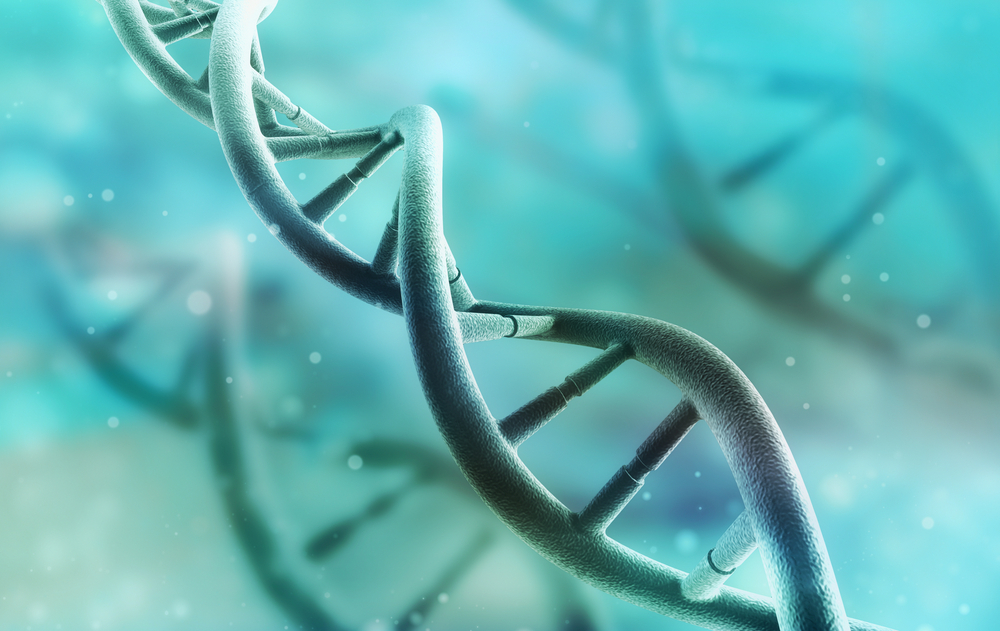BRCA Genes: Protector From or Cause of Breast Cancer?

Many women have heard of the term “BRCA” standing for Breast Cancer Associated genes and their association with inherited breast cancers. Perhaps not as well known is the fact that the BRCA genes normally play an important role in protecting our bodies as they age. It is only when mutations of these BRCA genes occur that the risk for developing cancer increases, because the mutations inactivate their protective effects.
Throughout our lifetime, our body continually is engaged in renewing itself. Every minute, somewhere in our bodies our aging cells pass on their “personality” by creating “daughter cells” that will replace them in location and function. Old cardiac cells produce identical but younger heart cells. Old muscle cells generate newer muscle cells and so on. These amazing events occur through a process called deoxyribonucleic acid (DNA) replication.
The genetic makeup for each cell in our body is contained in a double-stranded DNA molecule. Each time a cell divides, the two resulting daughter cells each receive the same genetic information that was contained in the DNA of the parent cell, but it is the organization of the DNA that gives it its genomic identity. The two strands of the DNA, which provide the backbone of the molecule, are connected by bonding of strand components called nucleotides, arranged like steps on a ladder. The nucleotides, adenine (A) and thymine (T), always pair with one another, as do the nucleotides, cytosine (C) and guanine (G). The specific arrangement of these pairs of nucleotides along the double-stranded DNA, like a computer code, produces the unique genetic fingerprint of that cell.
The process by which daughter cells are provided the identical genetic makeup of the parent cell begins as the two DNA strands in the parent cell are separated, much as a zipper is unzipped, leaving each strand with its own complement of half-paired nucleotides, bearing all necessary information to make a new cell. While each strand is open, free-floating nucleotides present in the cellular environment that normally pair with those specific nucleotides are secured, thus reestablishing the paired relationship. Finally, enzymes reassemble the new strands into a double-coiled arrangement in each of the daughter cells. Since each time a cell divides it has to copy and transmit the exact sequence of more than three billion nucleotides to its daughter cells, it is easy to understand the risks of transmitting mistakes to the next generation of cells.
It is in the governing of this process that BRCA genes normally play an important role. DNA replication occurs in an orderly fashion dictated by progression through a cell cycle made up of five steps designated G0 (resting), G1 (first gap), S (synthesis), G2 (second gap), and M (mitosis) phases. Each phase is separated by a checkpoint in which transition from one step to the next mandates that all requirements at that checkpoint are satisfied. If at any checkpoint problems are encountered, the cell cycle is stopped until repairs are made. The undamaged BRCA genes oversee this repair process.
There are five known repair pathways which can be activated when ultraviolet light, cosmic or isotopic irradiation, environmental pollution, cigarette smoking, or other insults damage our DNA. Two important mechanisms are homologous recombination repair (HRR) and non-homologous enjoining (NHEJ). BRCA genes participate in both, specializing in the rejoining of double-stranded DNA that has been cut clean through, leaving the chromosome in two pieces. Non-homologous enjoining ligates DNA damaged ends in G1 phase by removing or adding bases to the broken ends. Homologous recombination repair only functions at the checkpoint between S and G2. Rejoining broken chromosomal DNA suppresses the uncontrolled replication of breast cells leading to a malignant tumor.
Inherited mutations of the BRCA1 and BRCA2 genes, identified in 1990 and 1995 respectively, inactivate the repair capacity of the genes, removing this protective shield. Significantly, since inherited BRCA mutations come from the germ line that is the source of all cells in the body, they greatly increase cancer risk. In the case of breast cells, all have the mutation, and so all are impaired in DNA strand joining.
The clinical implications have been recognized only recently. Today, in the general population, there is a 12% lifetime risk for breast cancer, yet by age 70 there is a 55% to 65% risk of breast cancer if one carries a BRCA1 mutation and a 45% risk with a BRCA2 mutation. Lifetime risk for ovarian cancer in the general population is 1.3%, but 39% of women with the BRCA1 mutations and 11% to 17% with the BRCA2 mutations will develop ovarian cancer by age 70.
How has this information helped women? Advances in cancer management have resulted from risk identity, improved surveillance, and targeted treatments. Genetic research and engineering, as well as expanding our knowledge of the health and risks to our DNA, focus on all three areas of science.
By James Woods, M.D. and Elizabeth Warner, M.D.
Dr. Woods treats patients for menopause at the Hess/Woods Gynecology Practice.
Disclaimer: The information included on this site is for general educational purposes only. It is not intended nor implied to be a substitute for or form of patient specific medical advice and cannot be used for clinical management of specific patients. Our responses to questions submitted are based solely on information provided by the submitting institution. No information has been obtained from any actual patient, and no physician-patient relationship is intended or implied by our response. This site is for general information purposes only. Practitioners seeking guidance regarding the management of any actual patient should consult with another practitioner willing and able to provide patient specific advice. Our response should also not be relied upon for legal defense, and does not imply any agreement on our part to act in a legal defense capacity.
James Woods | 4/4/2016




